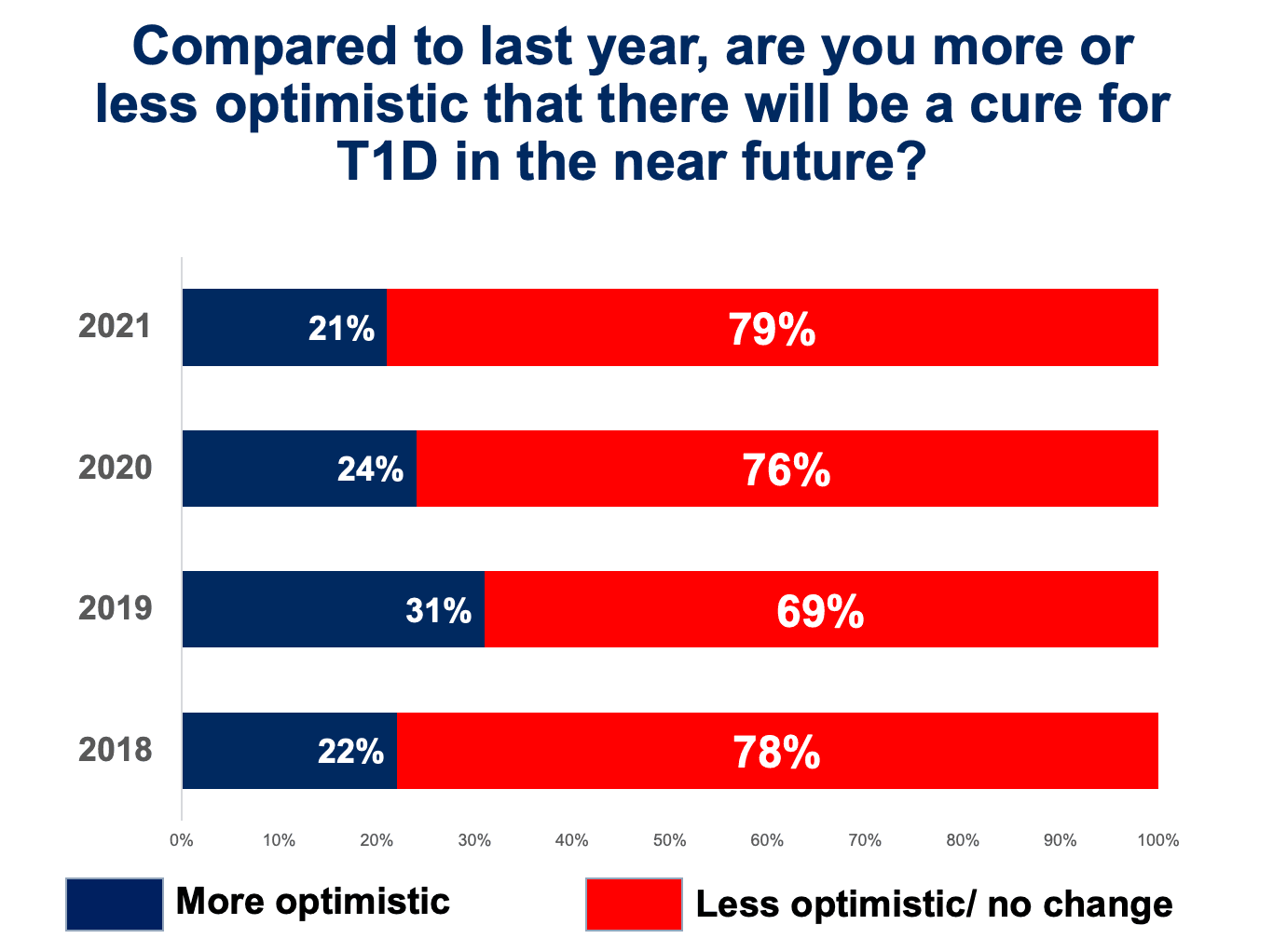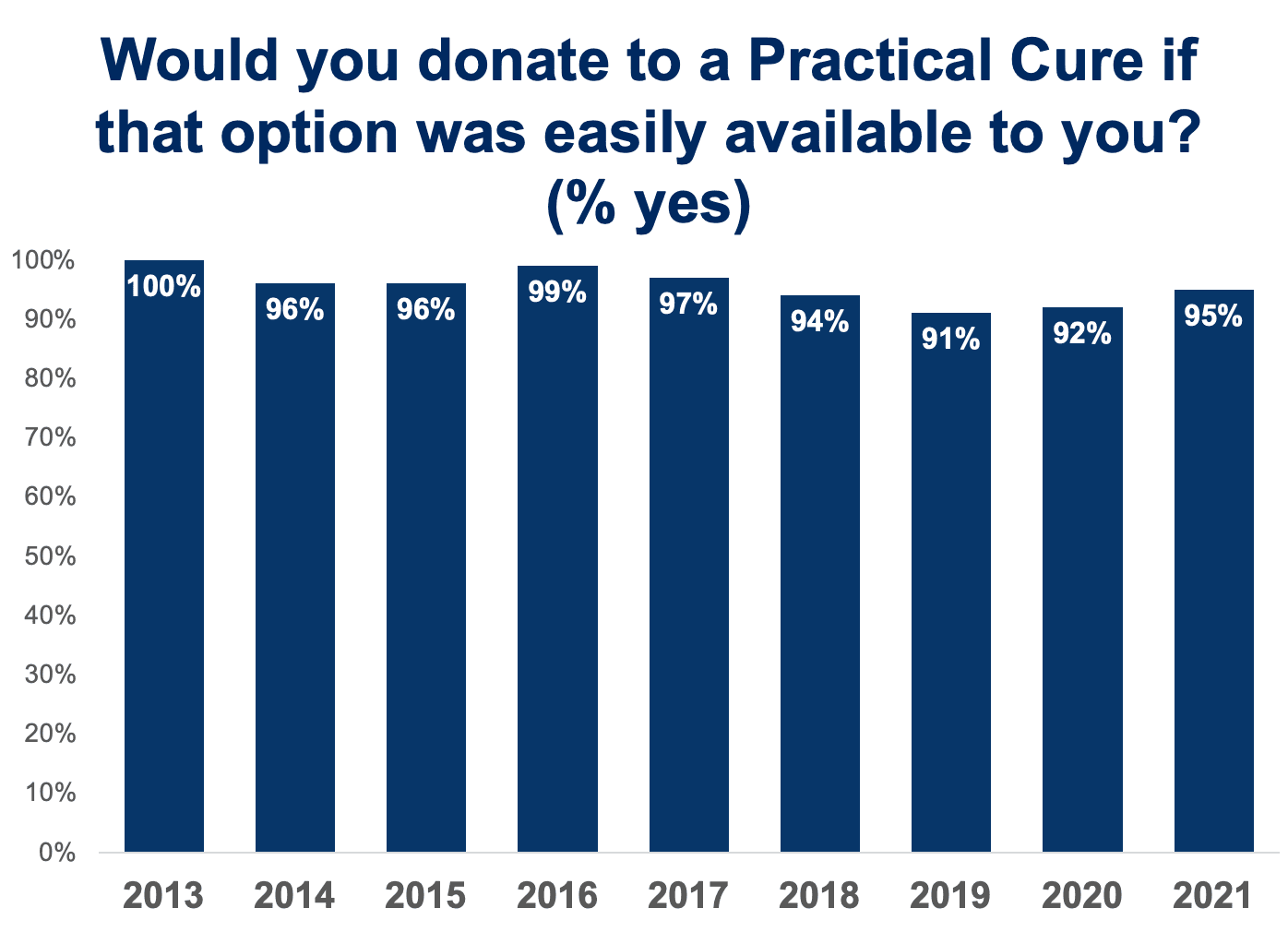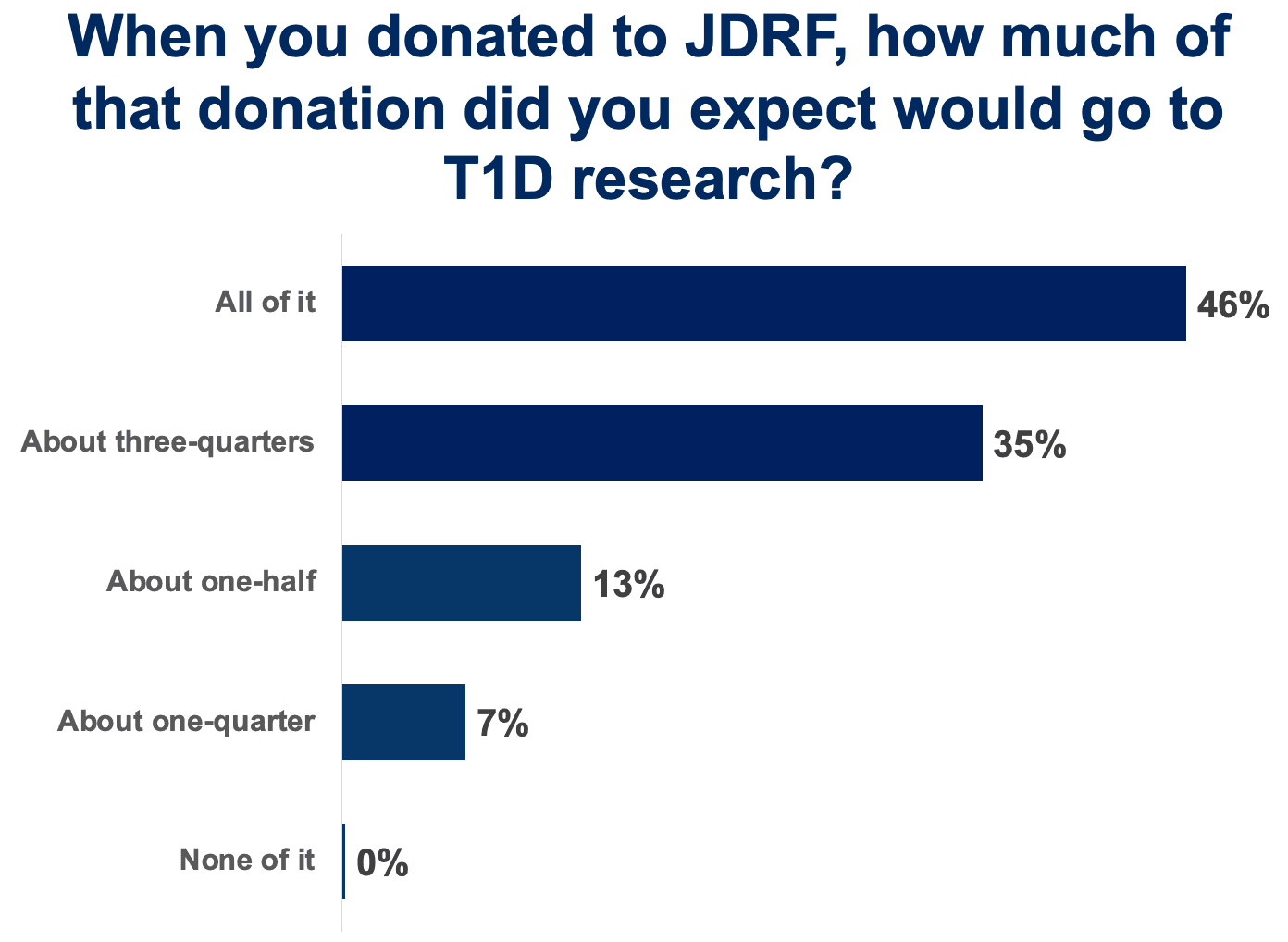Each year, T1D donors contribute nearly half a billion dollars to the major T1D research organizations: JDRF, the American Diabetes Association (ADA), academic research centers, and others. For over a decade, the JDCA has conducted annual surveys to gauge the priorities, perspectives, and behaviors of these donors.
This report will summarize the six key findings from this year’s survey, which was conducted in April 2021 and drew responses from T1D donors from a broad geographical area, ranging in age from 18 to 75.
1) T1D donors want their money to support research to find a cure.
T1D donors are motivated to give to charity for one reason above all others: to fund a cure for T1D. T1D donors consistently assert that funding cure research should be the top priority for diabetes charities. See chart below.

When given a wide variety of choices for how their donation could be used, T1D donors overwhelmingly want to fund cure research. Programs related to lobbying, public education, and growing the organization itself are all secondary to this goal. See chart below.

2) Despite all the money raised to cure T1D, donors do not feel optimistic that this outcome will be achieved.
Over the last four years, over a billion dollars has been donated to diabetes charities with the intention of funding cure research. Yet, this investment has not resulted in donors feeling any closer to their goal. See chart below.

3) More than half of T1D donors have participated in a virtual fundraising event over the past two years.
In-person T1D fundraising events have been a major driver of T1D donations over the years. However, T1D donors are also willing to bring their energy and their dollars online – over half have participated in a virtual fundraising event in the last two years. See chart below.

4) The T1D community believes in and supports a Practical Cure.
A Practical Cure is any solution that can be achieved within 15 years that would allow a person with T1D to live a healthy lifestyle free from daily insulin, daily glucose monitoring, and restrictions. Nearly everyone in the donor community believes this outcome would improve the lives of people living with the disease. See chart below.

Practical Cure research has never been the top priority for the funders of T1D clinical trials in the US. In fact, in the past 11 years, it has not comprised more than 2% of US clinical trials in a single year. However, Practical Cure research is important enough to T1D donors that almost everybody would donate to a Practical Cure project if given the option. See chart below.

5) JDRF donors expect that their donations go to T1D research.
When donors give money to JDRF, their expectation is that most, and in many cases all, of that money is going directly to T1D research grants. See chart below.

6) JDRF is putting its main revenue source at risk by going against the wishes of its donors.
When donors learn that JDRF spent only one-third of its revenue on research projects and two-thirds on overhead, salaries, and advocacy, a concerning fact comes to light — seven out of ten say they may stop donating. The worst possible outcome for all involved parties would be a decrease in T1D donations. See chart below.

